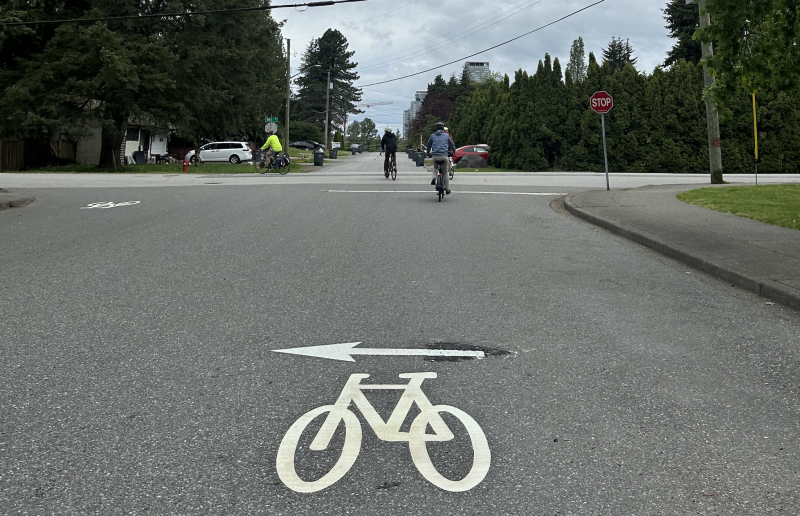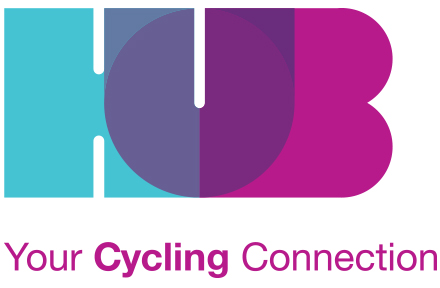Safe Passing Law Protects People Cycling, Walking and Using Wheelchairs

June 10, 2024
Starting June 3, people cycling, walking, rolling or using mobility devices like wheelchairs or electric scooters now have better protections under B.C.'s new vulnerable road user law. This law requires people to drive safely and give space when passing.
Since 2016, HUB Cycling has been advocating for reforms to the Motor Vehicle Act to protect vulnerable road users. We made several recommendations to the Provincial Government to improve the outdated Motor Vehicle Act, and it’s encouraging to see these reforms. This bill is the first step in updating the Motor Vehicle Act, and it has led to some positive changes:
- A new Vulnerable Road User definition (which includes; people walking, cycling, on e-bikes or using wheelchairs). This definition now provides clarity, accountability and stronger penalties for unsafe behaviour around vulnerable road users.
- New regulations require people driving vehicles to take precautions when interacting with vulnerable road users. The changes establish a minimum distance of 1 meter that drivers must maintain when passing people cycling and other vulnerable road users. This distance increases to at least 1.5 meters on highways with a posted speed limit above 50km/h.
- Better protection for people with mobility challenges who use mobility devices like wheelchairs. These devices are now an extension of the person, who is already a pedestrian under the Motor Vehicle Act.
- People aged 14 years and older will now be able to use a new class of e-bikes with age-appropriate safety precautions including less power, lower maximum speeds and motors that only operate with pedalling.
- A prohibition against the operation of fully automated self-driving vehicles unless provincially authorized.
Drivers who don't follow these new rules can face fines and penalties. Not taking proper precautions around vulnerable road users can result in a fine of $109 and 3 driver penalty points. Not keeping the minimum passing distance can result in a fine of $368 and 3 driver penalty points.
Our advocacy work aims to make roads safer and encourage more people to walk, cycle, or use other forms of active transportation. This requires safe infrastructure and fair and equitable policies that make active transportation the safest and easiest choice for everyone, regardless of age, ability, or socio-economic background.
While these new laws are a good start, building safe systems and infrastructure is the main way to improve safety. The Safe Systems Approach aims to prevent crashes and reduce harm when crashes happen. This approach protects everyone, including people driving, walking, cycling, and wheelchair users. Many places in B.C., including the provincial government have adopted the Vision Zero philosophy, which focuses on designing roads that don’t rely on perfect human behaviour since everyone makes mistakes. The province needs to invest more in healthy transportation options and give more funds to local governments to make roads safer.
According to ICBC, about 60% of crashes happen at intersections. Allowing right turns only on green lights is one way to reduce injuries and deaths, supporting Vision Zero. HUB Cycling will keep pushing for safer neighbourhoods and intersections by permitting right turns only at green lights. Research shows that turning right on red lights is risky for people walking, cycling, or using wheelchairs, especially children.
To learn more about our ongoing MVA advocacy work, visit bikehub.ca/mva or contact us here.
Global News: Minimum distance requirements now in place for B.C. drivers and vulnerable road users
Your support enables people of all ages and abilities, across regional and diverse communities, safer and more just transportation options. What is the Impact of Your Generous Gift?
- $2,500 helps us develop programs for communities that may face social, cultural, and/or financial barriers to cycling.
- $1,500 helps us maintain and expand our letter-writing tool to enable British Columbians to communicate directly with decision-makers about the importance of investing in improved cycling in BC.
- $500 helps us engage with equity-deserving communities about their needs
- $250 helps us provide infrastructure research support needed for an advocacy project like expanding cycle highways to underserved communities.
- $100 helps HUB organize online learning to encourage people of all ages and abilities


